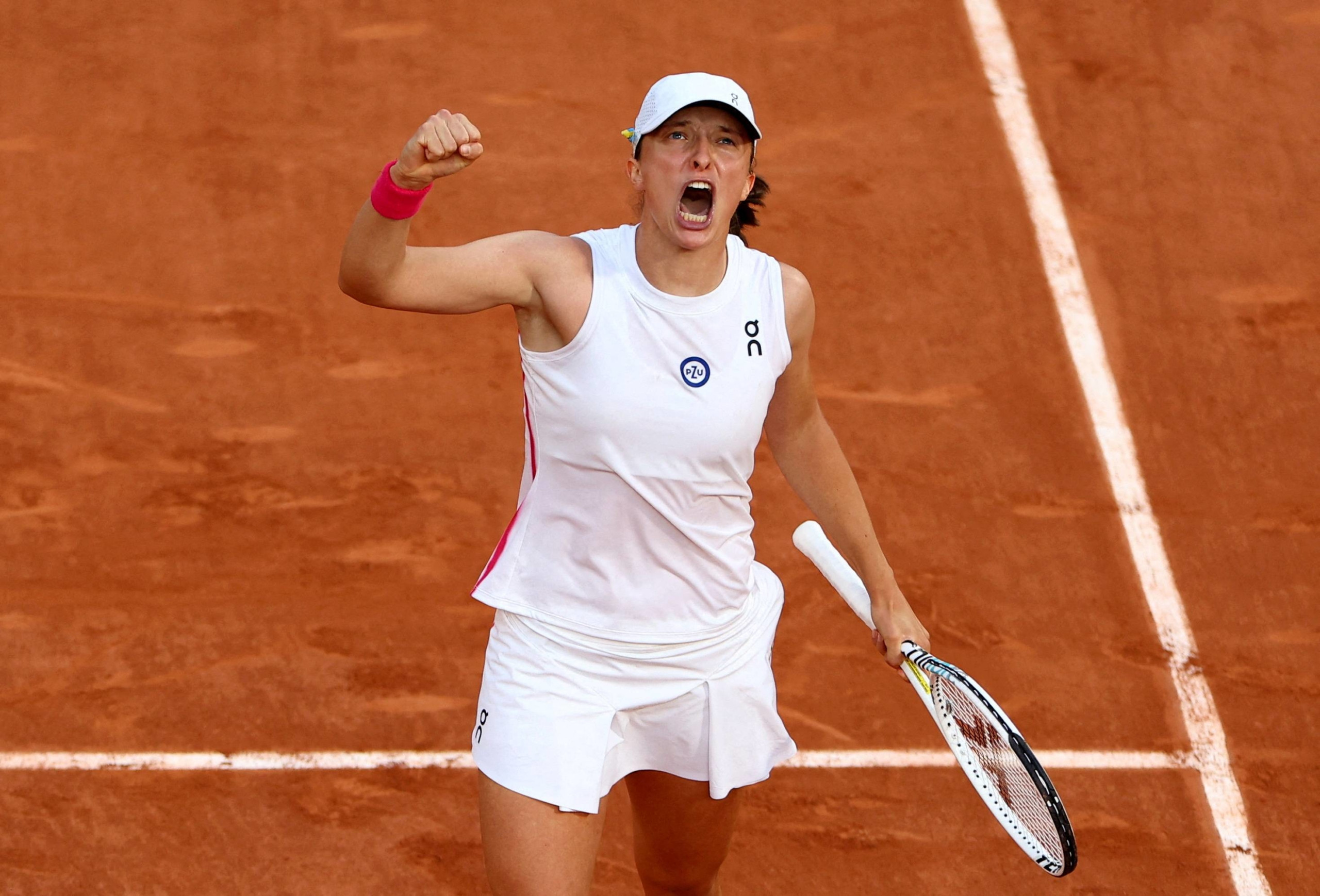PARIS:
Reigning French Open champion Iga Swiatek will attempt to become the first woman to successfully defend the title in Paris in 16 years on Saturday when she faces surprise finalist Karolina Muchova.
World number one Swiatek is bidding for a third Roland Garros crown in four years and fourth Grand Slam title following her 2022 US Open victory.
Justine Henin was the last woman to win back-to-back French Open titles when she captured her third in a row and fourth in total in 2007.
Swiatek, 22, has yet to drop a set in this tournament but will be wary of her Czech opponent who knocked out second seed Aryna Sabalenka in the semi-finals after recovering from 2-5 and match point down in the final set.
Swiatek’s last-four win over Beatriz Haddad Maia of Brazil coupled with Sabalenka’s agonising defeat ensured the Pole will remain at number one heading into the grass-court part of the season.
She is the youngest woman since Monica Seles in the early 1990s to reach three French Open finals, while world number 43 Muchova is the fourth lowest ranked player to reach the showpiece match here.
Swiatek, then just 19, was ranked 54 when she lifted the trophy in 2020 — three years after Jelena Ostapenko’s shock triumph. Muchova’s compatriot Renata Tomanova was runner-up in 1976.
It is still early in her career but Swiatek is starting to establish a dominance at Roland Garros best associated with Rafael Nadal, the record 14-time French Open champion.
“Rafa, what he did and what he’s still doing, it’s pretty amazing,” said Swiatek. “I never kind of knew that it’s gonna be possible for me.
“So it was totally out of my reach, if I can say that. And still he played so well so many years, I don’t know if it’s going to be possible for me.”
Seles and Naomi Osaka are the only women to win each of their first four Grand Slam finals.
With a 27-2 record at Roland Garros, Swiatek will be the overwhelming favourite, but Muchova has won all five matches in her career against players in the top three — four of them at Grand Slams.
“It’s nice. I didn’t really even know about this statistic. It just shows me that I can play against them,” said the 26-year-old trying to become the first woman to beat the world number one and two at a Grand Slam since Svetlana Kuznetsova at the 2009 French Open.
Once a top 20 player, the injury-plagued Muchova was sidelined by an abdominal problem for seven months in 2021 while she ended last year’s French Open in a wheelchair after suffering an ankle injury.
Only last September, her ranking was outside the top 200.
“There has been many moments, many lows, I would say, from one injury to another,” said Muchova.
“For sure when I missed the Australian Open last year, and I was in a pretty bad state health-wise, I was working out a lot to try to get back.
“Some doctors told me maybe you’ll not do sport anymore. But I always kept it kind of positive in my mind and tried to work and do all the exercises to be able to come back.”
It will be the fifth French Open in a row featuring a first-time Grand Slam finalist and just the second time Swiatek has played Muchova.
Their only previous meeting came in Prague in 2019 when Muchova won in three sets against Swiatek, who had come through qualifying to reach the main draw.
“I really like her game, honestly. I really respect her, and she’s I feel like a player who can do anything,” said Swiatek.
“She has great touch. She can also speed up the game. She plays with that kind of freedom in her movements. And she has a great technique.”
Swiatek has soared to the top of the sport since her 2020 breakthrough in Paris. For Muchova, it’s been a rollercoaster ride, but the challenging journey makes her savour the moment all the more.
“In the past, it was not easy. That’s actually what makes me appreciate this result even more now, because I know what I have been through in the past,” Muchova said after beating Sabalenka.
“To be now in a Grand Slam final, it’s for sure my dream. I’m super, super glad that I’m here.”
“It’s up-and-downs in life all the time. Now I’m enjoying that I’m on the upper part now.”















































